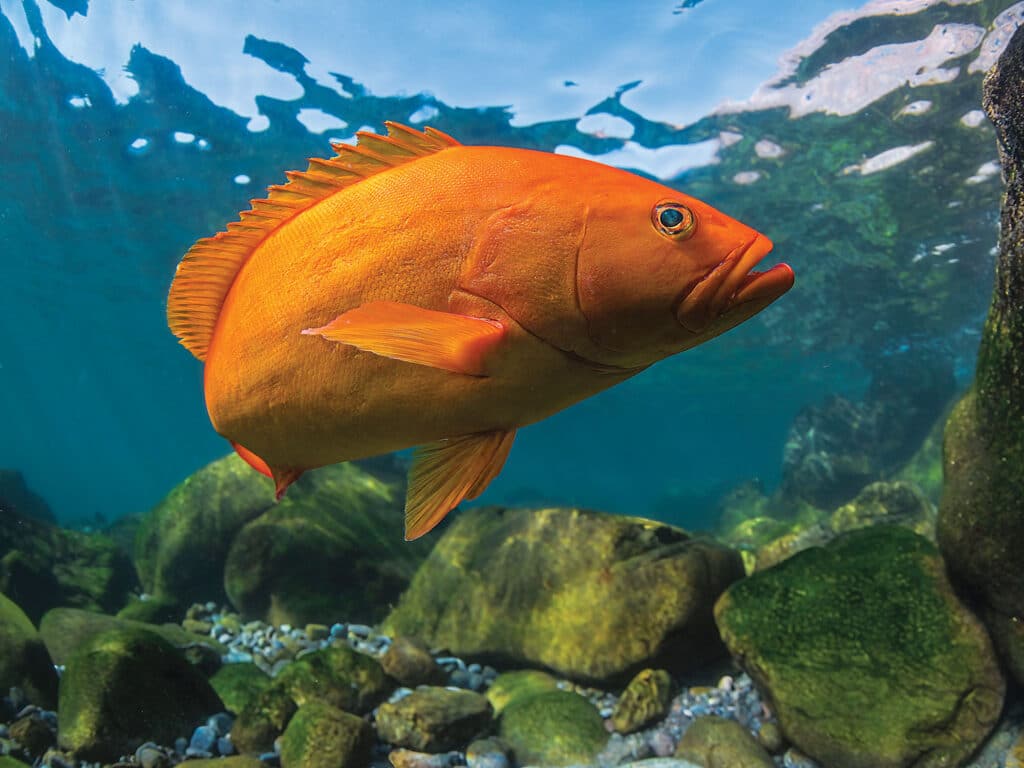
For West Coast anglers seeking true adventure, the waters on each side of Mexico’s Baja California peninsula have long been the go-to destination. These waters are just a hop, skip and jump below the border, yet the fishing opportunities are still wild, primitive, unpredictable and, in some minds, magical. Trips here are the stuff that angling dreams are made of and often result in memories that endure for generations.
Both coasts of Baja have much to offer, but the breathtaking eastern side facing the Sea of Cortez and its chain of islas (Spanish for islands) offers a distinctly rich ecosystem drastically different than the wave-swept Pacific side. It is here amid the often-calm crystalline waters and jagged shores of the coast and the so-called Midriff Islands that cabrilla sardinera lurk, ambush prey and grow strong.
Better known among American anglers as leopard grouper or simply cabrilla (pronounced ka-bree-ya), this species represents the junkyard dog of the Baja coast. Cabrilla love to chase and eat artificial lures. These structure-loving fish can be found predominantly around rocks, reefs and submerged pinnacles. A cabrilla resembles its cousin, the gag grouper of the southeast Atlantic and Gulf of Mexico, but with a deeper brown and more mottled pattern along the flanks. Size-wise, most fish average about 4 to 8 pounds, but you can get into schools of 10- to 15-pounders that serve as the bread and butter of cabrilla fishing. A trophy fish will go 20-plus pounds, and the International Game Fish Association all-tackle world record is currently 28 pounds, 10 ounces. A 20-pound cabrilla hooked around Baja’s snag-infested shore structure can be one of the most challenging fish to land.
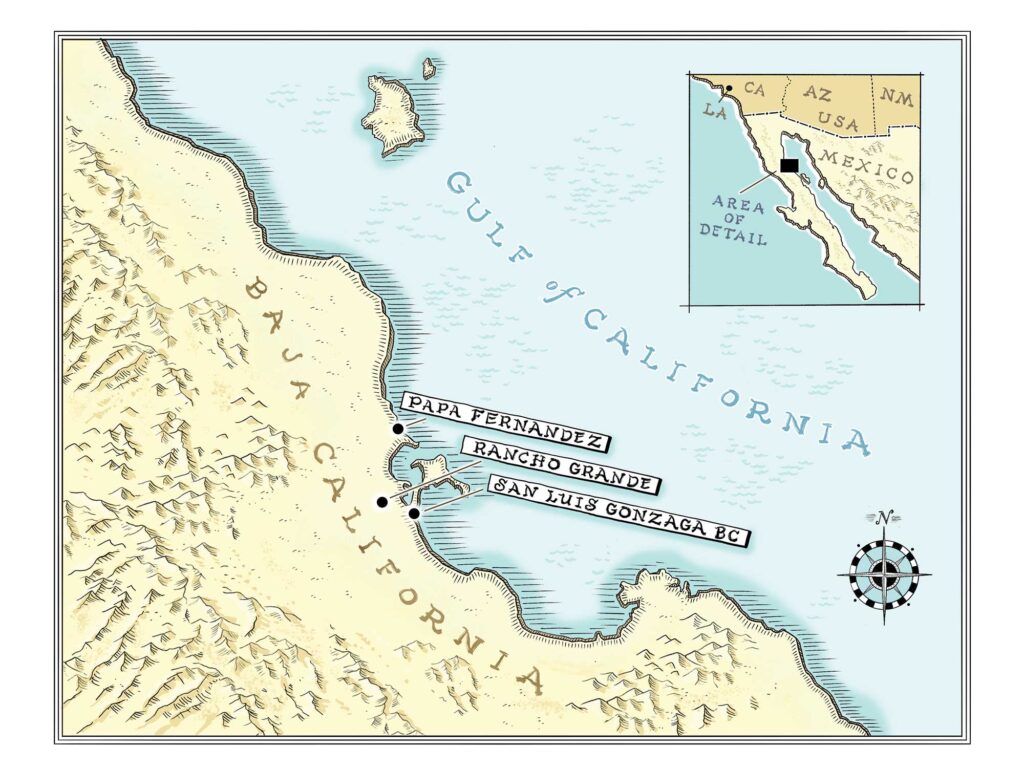
Cortez Gold
The unique aspect of this species lies in its visually stunning golden phase that occurs naturally in approximately 1 percent of all leopard grouper, according to scientists. Many anglers revere the goldens as rare trophy fish due to their illusive nature among the normally patterned fish. The locals refer to the golden grouper as “la reina” or the queen of the Cortez. These rare grouper are respected by many local fishermen. Commercial fishermen have been known to go out of their way to release these queens, and most American anglers consider it bad luck to kill one.
There are many ways you can target this species. As a Southern California resident, I lean toward West Coast-style inshore tackle. This includes 7 1/2- to 8 1/2-foot heavy- and extra-heavy-action casting rods with 400- to 500-size low-profile reels spooled with 65- to 80-pound-test braided line, with a 3- to 4-foot leader of knottable nickel-titanium wire tied to a 120-pound-test clip.
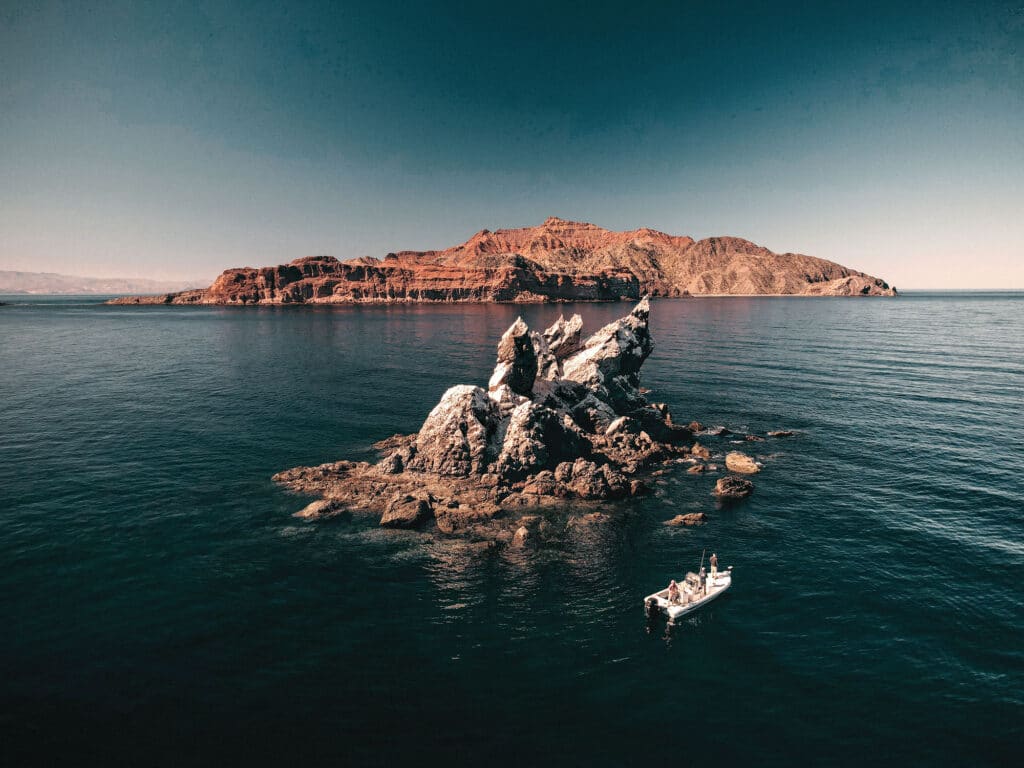
Grouper Gear
For cabrilla combat, your gear needs to be in good shape with fresh line ready to endure some raw Baja punishment. Practice your braid-to-leader connection knot and lure connection knot in fine detail, especially if you’re unfamiliar with knottable nickel-titanium wire. Connections are always a crucial aspect to angling, but the demands of Baja and the species you might encounter test any imperfections in your tackle. You can also use a fluorocarbon leader if you prefer, but I would fish as heavy as you’re comfortable with. Use nothing less than 60-pound-test fluoro because these fish will find ways back into the rocks. You might also hook other species, such as toothy sierra mackerel or barred Gulf snapper (aka pargo), in which case you’ll wish you had a wire leader and your prize lure back.
Hard baits, light-metal jigs and swimbaits tend to get the nod when it comes to lures, but don’t rule out stickbaits and poppers to mix things up in case surface commotion is a trigger. I like to keep things relatively simple with a lure mix consisting of AFTCO’s new subsurface swimming and gliding 150 mm Swimmer, Kicker Fishing’s 25 light surface iron, 165 to 190 mm jerkbaits, or a swimbait such as Warbait’s Neck Breaker jig head with a Kicker Fishing Pickle Kick swimbait. Make sure all split rings and treble hooks are ready to handle the abuse. I like to upgrade all hardware and use 4X hooks to keep things honest and ready for the giant cabrilla.
Off-the-Grid Estates
When you do your research about Baja and specifically the northern upper section along the Sea of Cortez, you’ll notice there’s a few primary stops down Mexico’s Highway 5 past San Felipe that offer various options for house rentals, hotels, yurts, palapas and campos. Most locations are very much “Baja style,” meaning rural with little to no amenities. With this in mind, plan and pack accordingly with adequate amounts of food, ice, camp cook gear, and any other creature comforts you might want or need. It’s purely off the grid in this stretch of the peninsula, with no cellphone reception or internet connectivity unless you have the means to utilize satellite services like a Zoleo or Starlink device.
If you have a boat in tow, note there are relatively few boat-launch facilities, and many boating anglers launch from beaches on calm bays. This is why you need a four-wheel-drive tow vehicle for launching and loading from sandy or rocky, algae-slick shores. Boats with a shallow draft, such as bay boats or hybrids, are well-adapted to such unimproved launch sites. If in doubt, seek out locals to learn when and where to splash your ride.
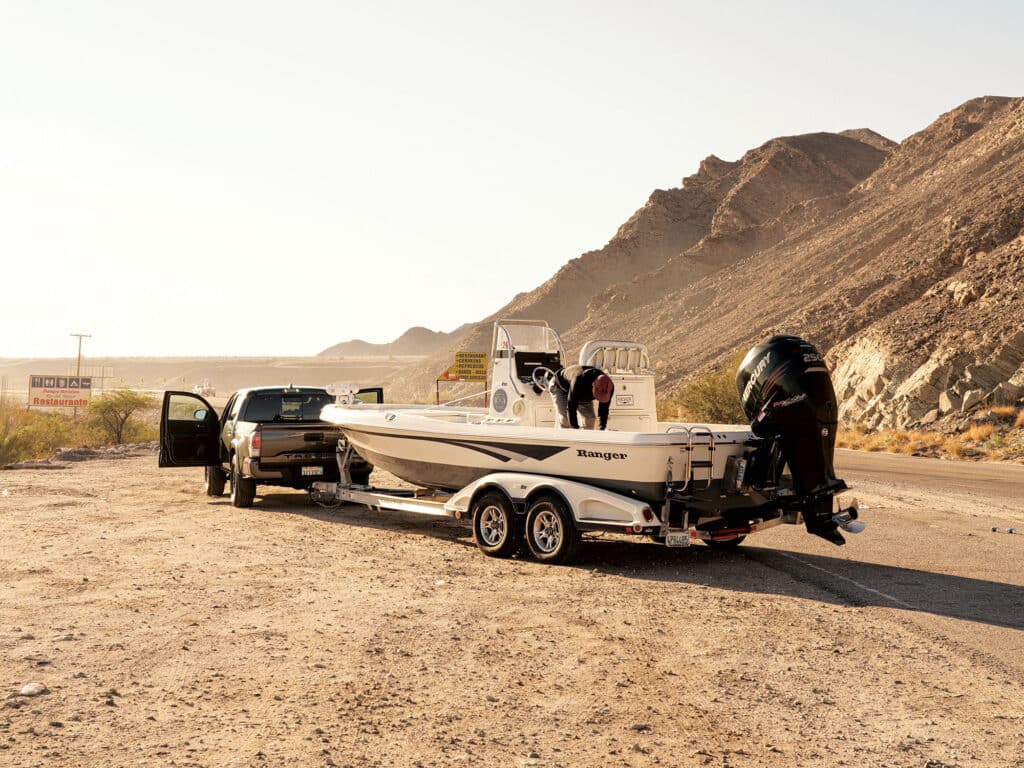
Gonzaga Base Camp
One of the more popular areas to target cabrilla is Bahia San Luis Gonzaga (aka Gonzaga Bay). I prefer to utilize Campo Papa Fernandez at kilometer marker 143 due to its location behind Isla Willard and proximity to islands in both directions, not to mention a fishy coastline both north and south of camp. Even more importantly, there are clutch amenities like gas, firewood, dining, and a market a short drive south from camp. The Papa Fernandez restaurant provides a night off from camp cooking duty and an opportunity to enjoy some genuine home-cooked Mexican food. Claudia and Gonio, who manage and maintain the restaurant and campo community, do a tremendous job to facilitate, lend a hand, and ensure your stay is enjoyable. If you are fortunate enough to have a meal at the restaurant, make sure you get their chile relleno and the camaron de ajo—absolutely stellar dishes. You simply cannot go wrong with any dish on the menu.
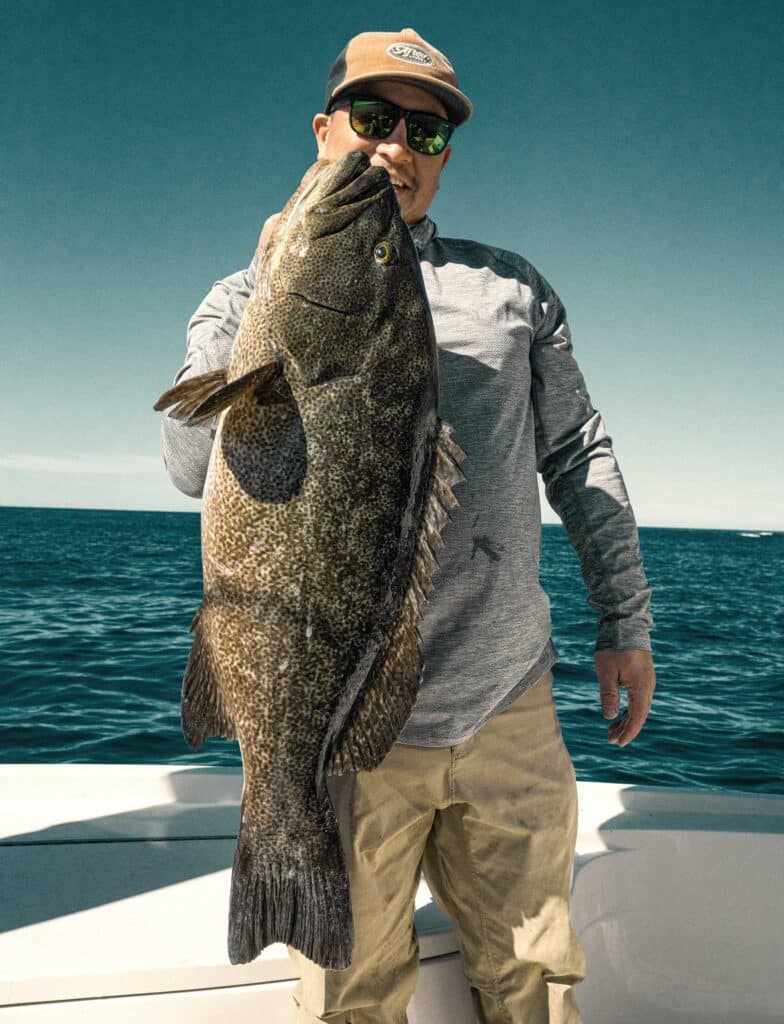
Cactus Bass
The terrain that these fish inhabit can be less than forgiving, but it’s also surrounded by a gorgeous desert landscape. The topography and rocky coastline create an endless cactus-lined playground of fishable water for an artificial-lure enthusiast. You must keep in mind that the tidal swings in the Sea of Cortez can be extreme. It’s common to have 10 to 12 feet of water movement, but it can be up to 20-plus feet. Prime structure can change based on the drastic amount of water moving in and out of shallow spots, as well as isolated high spots.
With the help of electronics and a trolling motor on the bow, I can position the boat in a fishy shallow reef zone or on different angles of isolated pinnacles. At the same time, boating anglers need to be wary of shallow rocks, boiler rocks, and pinnacles that can emerge seemingly out of nowhere. All of these craggy rocks make for great ambush points for cabrilla, but they also can be dangerous if you’re not paying attention on a draining tide.
As mentioned earlier, these waters teem with a wide range of species. In addition to leopard grouper, other fish include California yellowtail, Mexican hogfish, finescale triggerfish, golden spotted bass, spotted sand bass, and sierra and barred Gulf snapper. It keeps things interesting, but it’s the cabrilla that are standout gamefish due to their propensity to strike lures and the challenge of reeling them from cover.
About 45 miles down the coast from Gonzaga Bay and offshore from Bahia de Los Angeles (aka Bay of LA) lies Isla Angel de la Guarda (Archangel Island). The rocky outcroppings of this island provide some of the world’s best cabrilla fishing. On a recent winter trip to Gonzaga Bay, Randy Spizer and Skylar Khachadorian of Kicker Fishing had spent a couple of weeks fishing Archangel Island prior to our arrival and, fortunately for us, had the bite dialed in. It was extremely fun to see them call all the shots and put us on some epic bites.
The cabrilla catches were steady on 9- to 14-pound fish, but we also caught fish up to 22 pounds, and lost even bigger ones due to break-offs. Khachadorian managed to catch four golden grouper, and the boat totaled 94 fish for the day.
Experiences like these are what it’s all about and keep calling me to head down below the border to the magnificent Sea of Cortez in pursuit of the golden grouper of Gonzaga Bay.









